How to Pick Out a Puppy with a Good Temperament?
Choosing the right puppy with a good temperament is an essential step in ensuring a long, harmonious relationship with your new canine companion. After all, no one wants to end up with a mischievous pup who prefers shredding your couch to playing with its toys.
In this article, we’ll guide you through the process of finding the perfect puppy to fit your lifestyle and personality, increasing the likelihood of a happy, well-behaved, and loving dog to share your home with.

Before diving into the world of puppy selecting, it’s important to note that breed can play a significant role in determining a dog’s temperament. While each puppy has its unique personality, certain breeds have been specifically bred for characteristics such as friendliness and trainability. Therefore, researching breeds and their general behavioral traits is a fantastic starting point.
Once you’ve narrowed down your breed preferences, it’s crucial to observe potential puppies’ behavior across a variety of situations. Some key indicators of good temperament include social attraction, following, restraint, and stability, to name a few. Conducting temperament tests, such as cradling a puppy in a “baby” position and observing its reaction, can provide valuable insights into its levels of independent-mindedness or biddability.
Remember, selecting a puppy with a good temperament isn’t just about ensuring a well-behaved dog, it’s about finding the perfect furry friend who will bring smiles, joy, and tail wags to your everyday life.
Understanding Puppy Temperament
Nature Vs. Nurture
When it comes to puppy temperament, it’s essential to consider both nature and nurture. Genetics play a significant role in a pup’s inherent traits, but early socialization and training are just as crucial in shaping their personality. Think of it like baking a cake: the genes provide the ingredients, but how you mix and bake them determines the final product.
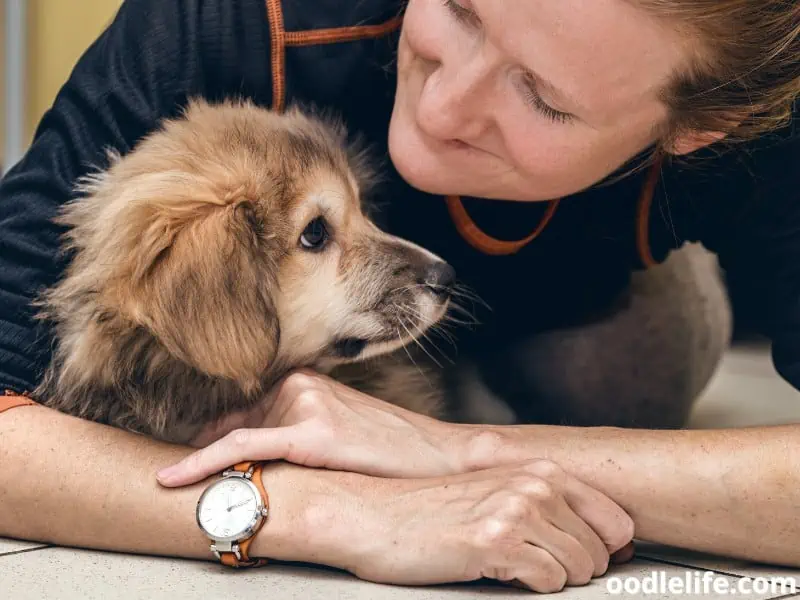
So, while you can’t control everything about your puppy’s personality, you can certainly help them develop into a well-adjusted and friendly companion.
Breed Influence
Different dog breeds are known for their unique temperaments. For instance, Golden Retrievers are famously friendly, while Border Collies are renowned for their intelligence and focus. But as much as breed traits may influence your puppy’s personality, it’s essential not to neglect the individual.

Just like humans, dogs are a product of both their genes and life experiences. So, while a Labrador might be known as a generally good-natured breed, each individual Lab can have its quirks and nuances. It’s essential to keep this in mind when choosing a new furry friend.
Individual Personality
No two puppies are alike, even within the same breed or litter. They each have a unique blend of traits that define their temperament. To get a glimpse into your pup’s personality, you might consider conducting a puppy temperament test (between 7-10 weeks of age).

These tests may include checking their response to stimuli like social attraction, restraint, touch and sound sensitivity, or social dominance. Remember, though, that these tests are only a snapshot of your puppy’s potential temperament. Also, these little furballs are constantly learning and adapting.
Who they become later in life depends on the care and guidance they receive from their humans.
So, now that you know a bit more about puppy temperament, you’re one step closer to finding your perfect canine companion. But remember, while genetics and breed influence are crucial, it’s the love and care you provide that truly makes a difference. Happy puppy hunting!
Choosing the Right Breed for Your Lifestyle
Size
When selecting a dog breed, consider the size of your living space. A larger breed, like a Labrador Retriever, may not be suitable for a small apartment. On the other hand, a smaller breed, like a Border Collie, may fit better in limited spaces.

Consider your dog’s future growth, as some breeds may start small but grow significantly larger. Be prepared to accommodate heavier or more voluminous dogs when they reach their adult size.
Energy Level
Different dog breeds have varying energy levels. For example, Border Collies are famous for their incredible energy, requiring plenty of exercise and mental stimulation. They may not be the best choice if you prefer a more relaxed lifestyle.
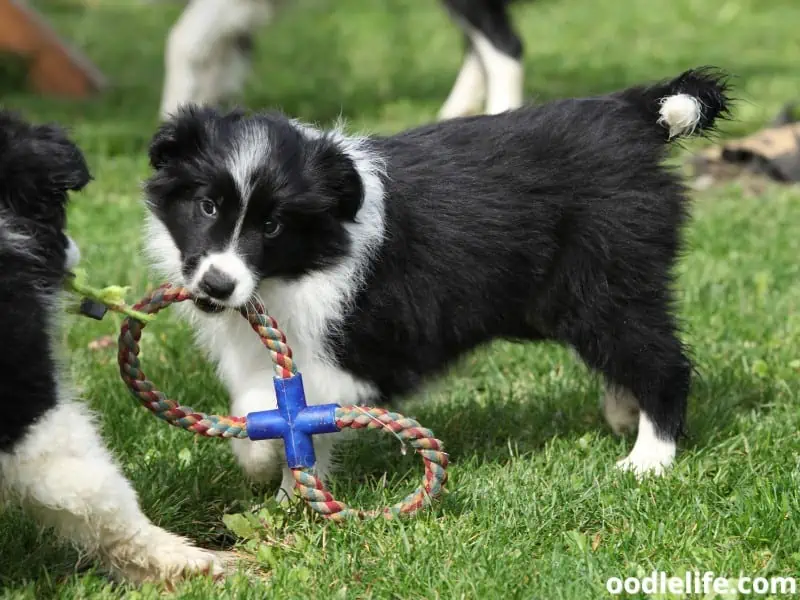
Retrievers, however, tend to have a calmer disposition but still require regular exercise. When choosing a breed, consider how much time you can dedicate to fulfilling your dog’s physical activity needs.
Specific Traits
Each dog breed comes with specific traits and characteristics. For instance, Labrador Retrievers are known for their friendly and outgoing personalities, making them excellent family pets. They may not be the best choice for someone looking for a guard dog, but they make up for it with their love and devotion.
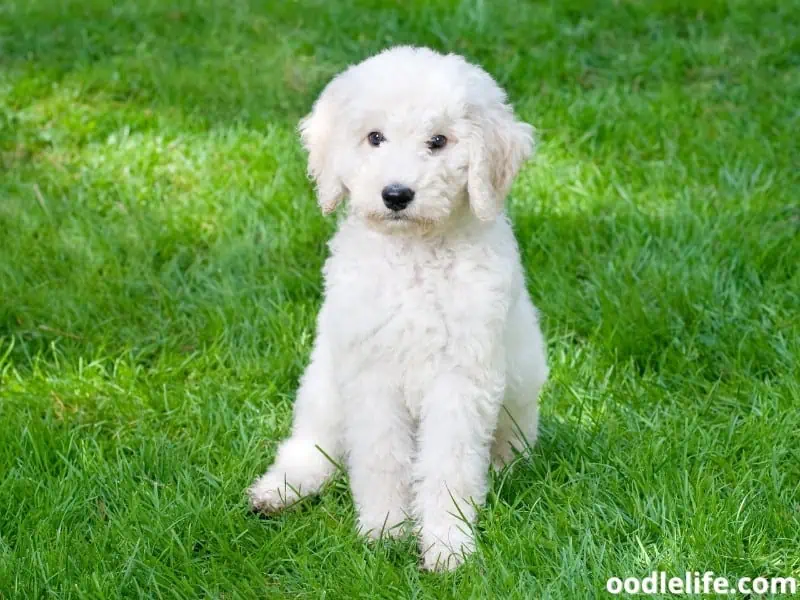
Purebred dogs often have well-defined traits, making it easier to predict their temperament and match them to your lifestyle.
Take some time to research different breeds and their specific qualities, keeping in mind your own preferences and living conditions. By carefully considering factors like size, energy, and specific breed traits, you can find a dog that complements your lifestyle and becomes a cherished companion.
Evaluating Puppy Temperament
Meeting the Parents
One key factor to consider when selecting a puppy is the temperament of the parents. Their behavior can give you valuable clues about the personality traits your future furry friend may inherit. Spend some time observing the parents, interacting with them, and asking the breeder about their traits.

If they’re friendly, social, and display good behavior, chances are the offspring will share similar qualities.
However, if the parents are known to have a difficult disposition or aggressive tendencies, you might be in for some unexpected challenges with your new pup. Remember, these inherited traits can vary, so there are no guarantees.
Puppy Temperament Tests
Conducting puppy temperament tests is another helpful way to assess a potential pet’s personality. These tests generally involve observing how the puppy reacts to certain situations or stimuli.
There are numerous tests available, but some common ones include:
- Social Attraction: Call the puppy to gauge their willingness to approach and socialize.
- Following: Walk around to see if the puppy follows, indicating their social nature.
- Restraint: Gently restrain the puppy, observing their reaction and level of tolerance.
- Retrieving: Encourage the pup to fetch a toy and bring it back to you.

Keep in mind that while these tests can provide a good idea of the puppy’s temperament, they are not foolproof. There’s always some room for change as the pup grows and matures.
Puppy Personality Evaluation
Apart from temperament tests, paying attention to a puppy’s personality during your visit is crucial. Observe their interactions with siblings and humans, and try conducting a simple test for independent-mindedness by gently cradling them on their back like a baby, placing a hand on their chest, and looking into their eyes. Pups that accept this handling are considered biddable, while those that resist may be more independent-minded.
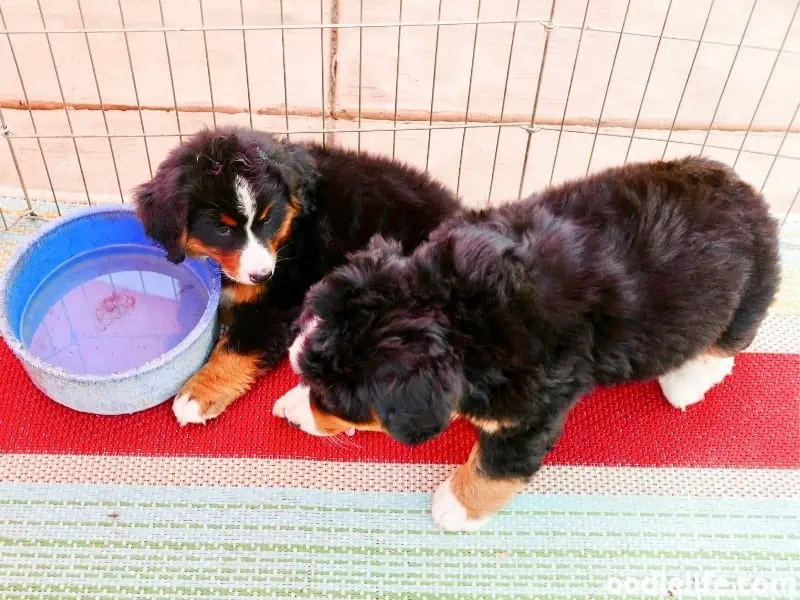
In addition to individual observations, some breeds are naturally friendlier and more trainable due to good breeding practices. Researching your preferred breed’s typical temperament can also help you make an informed choice.
In any case, achieving a good match between a puppy’s temperament and your lifestyle will largely depend on proper socialization and training. So, arm yourself with knowledge and, perhaps most importantly, patience. After all, our furry friends are worth it!
Selecting a Source
When looking for a puppy with a good temperament, it’s essential to consider the source. Below is a breakdown of different places you can get a puppy and what each source offers in terms of temperament and personality.

Responsible Breeder
A responsible breeder is passionate about their dogs and carefully planned litters to ensure the puppies have the best possible temperament traits. These breeders often screen their dogs for genetic diseases and make sure both parents of the puppies have excellent temperaments. When visiting a responsible breeder, you’ll want to check:
- Their home environment and how the puppies are raised.
- Ask to meet the parents of the puppies, as they are a good indicator of their offspring’s temperament.
- Check for the breeder’s involvement in dog clubs, groups, or relevant organizations.
- Get references from the breeder’s previous clients and hear about their experience.
Speaking with a responsible breeder is like talking to a doggy matchmaker – they’ll help you find your ideal furry companion!
Shelters and Rescue Groups
Another excellent source for a puppy with good temperament is local shelters or rescue groups. These organizations often take in dogs from various backgrounds, giving you a wide selection to choose from. Keep in mind that the history of the puppy may not be entirely known, so focus on:
- Observation and interaction with the puppy during your visit.
- Ask about any temperament assessments or previous owner information.
- Seek advice from an experienced dog owner or a trainer if you need a second opinion.
Shelters and rescue groups are not just a source for ordinary dogs – hidden gems await adopters with patience and a good eye for doggy* personalities!
Pet Shops vs. Show Breeders
Although many pet shops sell puppies, it’s challenging to predict their temperaments because they usually get puppies from various sources and may not pay much attention to the puppy’s upbringing. So, it is wise to avoid pet shops when searching for the perfect puppy temperament.
On the other hand, show breeders are a subset of responsible breeders usually focused on breeding high-quality, purebred dogs for dog shows. These breeders tend to prioritize breed standards, including temperament, and can be a good source for your next furry friend. However, show breeders’ puppies can be quite expensive, so be prepared for a little sticker shock.
With this information, you’ll be well-equipped to navigate the world of puppy selection, ready to find the perfect pup with the temperament of your dreams. Just remember, the key to finding the perfect puppy temperament is being patient, and most importantly, following your heart (and maybe your nose, too!). Happy searching!
Awareness of Behavior Issues
Aggression
Picking a puppy with a good temperament means being aware of potential aggression issues. Keep an eye out for behaviors like staring, standing stiffly at attention, lifted or twitching lips to show teeth, growling, and snapping, even if the tail is wagging. Meeting the puppy’s siblings and parents may also give you an idea of their potential behavior as they grow up.

Remember, you’re assessing a puppy, not a supervillain. However, observing these cues can help you make an informed choice.
Possessiveness
Another behavior to be aware of is possessiveness. Have you ever met someone who just can’t seem to share their toys? You wouldn’t want that trait in a puppy either.

Test the puppy’s possessiveness by handling their toys, food bowl, or gently taking something from them. A well-adjusted pup should allow you to do so without showing signs of stress or aggression. If the puppy remains chill during these interactions, they might just be a perfect candidate for a game of “borrow my stuff and return it later—no hard feelings.”
Shyness
Lastly, it’s essential to recognize and understand shyness in a puppy. A shy pup might need more time to warm up to new people and situations compared to their outgoing counterparts. However, don’t mistake shyness for a lack of friendliness.

To test this trait, see how the puppy interacts when approached gently and spoke to in a soft tone. Observe the pup’s initial reaction and how long it takes for them to become curious and comfortable. Remember, shy puppies are like introverted superheroes—they may mask their true abilities initially but are just as capable of being an amazing companion.
In conclusion, observing your potential pup for signs of aggression, possessiveness, and shyness is a proactive approach to ensure you select a puppy with a good temperament. Just like people, all puppies have their quirks, but understanding these behaviors can create a strong foundation for a long-lasting, loving relationship.
Training for Good Temperament
Environment and Context
Creating a positive environment is crucial for training your puppy to have a good temperament. It often begins with observing their reactions in various circumstances. Start by exposing them to different dogs, people, and situations, helping them be more adaptable as they grow.

Keep it lighthearted—you could describe this as “puppy playdates” or “socialization parties.”
Remember, your furry companion is learning by observing, so try to remain calm and collected when introducing new stimuli. Like a sponge, they’ll absorb that cool-as-a-cucumber demeanor.
Owner’s Role
As the owner, you play a vital role in shaping your puppy’s temperament. Think of yourself as their guide, leading by example. Show consistency and patience, just as you would with a small child, to help them develop trust.
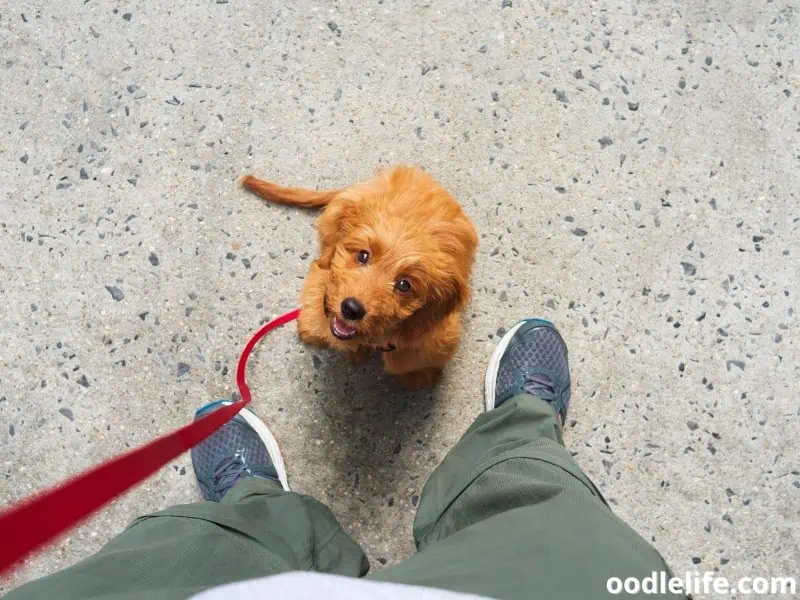
For instance, when training, avoid yelling or becoming aggressive. Your pup may grow up to be a miniature Hulk with anger management issues—cute but not exactly ideal. Keep your tone of voice neutral and clear, as if you were a reassuring GPS.
Health and Nutrition
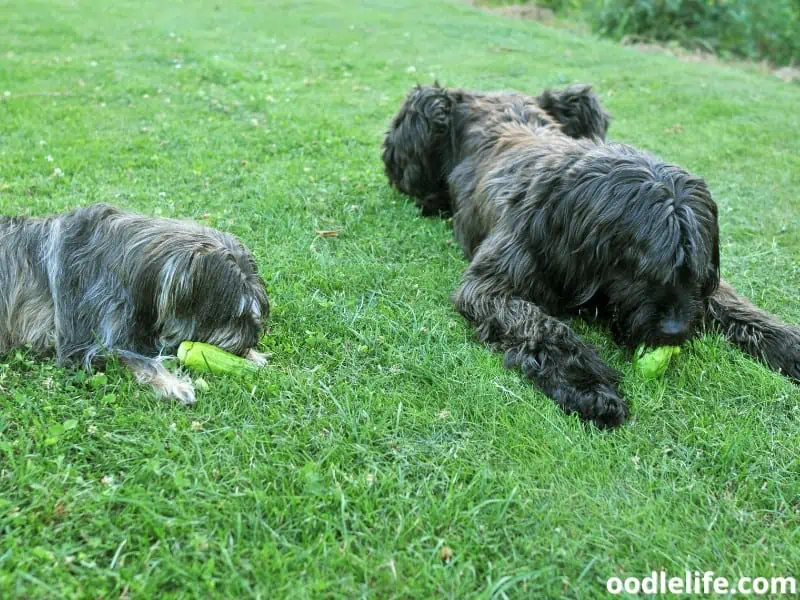
Table for Feeding (Puppies to Adult Dogs)
| Age | Feeding Frequency |
|---|---|
| 0 – 6 months | 3 – 4 times daily |
| 6 – 12 months | 2 – 3 times daily |
| 12 months & older | 1 – 2 times daily |
Believe it or not, your puppy’s health and nutrition also impact their temperament. A well-fed and cared-for pup is generally more content, just as you would be after a hearty meal. Refer to the table above for feeding frequency, but don’t be too strict—it’s not like they’re training for the Puppy Olympics!
Incorporate high-quality food appropriate for their age and size to ensure their nutritional needs are met. Not only will this keep their energy levels balanced, but it also reduces potential health issues that could negatively affect their behavior.
Keep an eye on your puppy’s health, including clear eyes, clean ears, and proper sleeping patterns. If anything seems off, consult your veterinarian.
A dog with a good temperament is a joy to be around. With a dash of patience, a sprinkle of fun interactions, and the right serving of food, your furry friend will be the life of the party! Just don’t let them steal all the attention—you still have some party tricks up your sleeve, too!